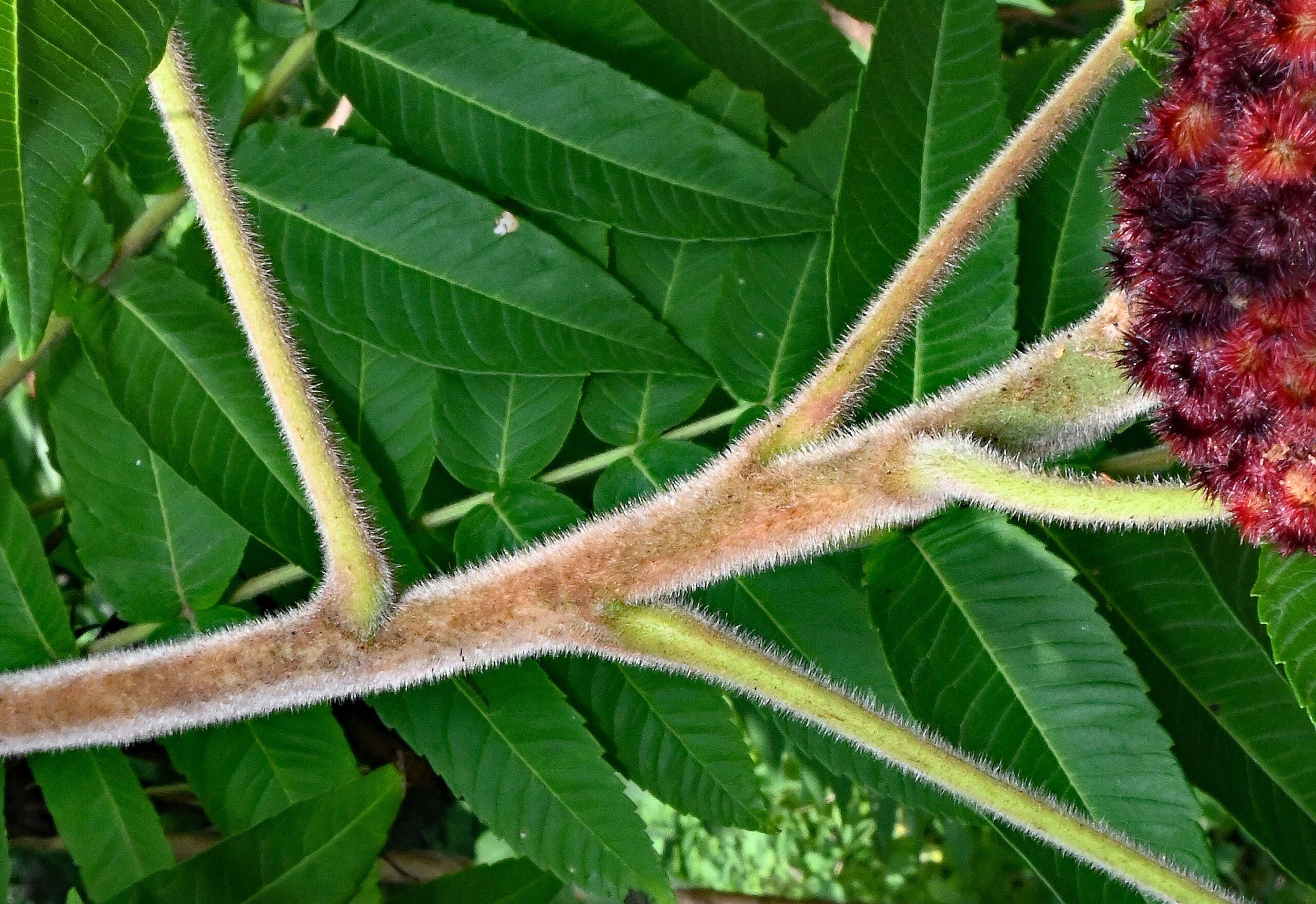
Without a doubt, we have a healthy white-tailed deer population. Deer provide a wonderful form of watchable wildlife. They also afford a bountiful hunting season.
Right now, bucks are busy growing their antlers. These will be their artillery against other stags during the autumn rut as they vie for does.
Antler growth is serious business and depends on a healthy animal and a good food supply year round. During this time, antlers are covered with tiny hairs resembling velvet that protect the growing bone and provide it with a healthy blood supply. When a buck is “in velvet,” its antlers are very vulnerable to injury.
Staghorn sumac

There is something else “in velvet” right now as well with an amazing resemblance to the current status of antler growth. Staghorn sumac (Rhus typhina) is in full splendor. This deciduous shrub gets its name from the tiny hairs that cover the young, forking branches and the resemblance to a stag’s antlers is amazing.
Native to eastern Canada and United States, staghorn sumac is a common plant because it is highly adaptable and tolerant of a wide range of soil conditions. Wider than it is tall and growing up to 25 feet in height, the shrub can easily thrive along roadsides, wooded edges and railroad embankments.
Its large, long compound leaves grow up to 24 inches in length and have many smaller oblong leaflets that are 2 to 5 inches in length. Yet, its key signature trait is the scarlet-colored fruiting bodies that develop during the summer months.
Beginning in May, terminal, cone-shaped clusters of greenish-yellow flowers begin to bloom. Pollinated by honeybees and other insects, these structures eventually mature into compact clusters of round, hairy fruits known as drupes. Not all of the shrubs will produce fruit, as males and females occur on separate plants. The fruit, up to 8 inches in length, begins to ripen in June.
Beware poison sumac
Staghorn sumac should not be confused with the much-feared poison sumac (Toxicodendron vernix). This plant is covered with a chemical called urushiol.
Simply touching poison sumac will cause a rash even nastier than that delivered by poison ivy, which carries the same resin. Luckily, poison sumac is less common, due to the fact that it only grows in wetland habitats and is hardly ever found in association with the staghorn sumac.
In addition to its affinity for moist areas, there are other definitive ways of telling the two species apart. Probably the most obvious difference is the berries. Poison sumac has clusters of waxy white berries that grow separately and hang down as opposed to the staghorn sumac berries which are red and fused together.
The compound leaves are also different. While the staghorn sumac has leaves that are serrated, poison sumac leaves have smooth edges. And finally, poison sumac lacks the hairy branches that give staghorn sumac its name.
Rhus juice

Staghorn sumac has many attributes. It is high in vitamin C and rich in multiple antioxidant compounds. The shoots can be peeled and consumed raw. All parts of the plant except the roots can be used as a natural dye. Native Americans mixed the dried leaves and berries with their tobacco. Beekeepers often use the dried sumac fruit as a source of fuel for their smokers.
Some of my fondest childhood memories involve staghorn sumac. Summers were always spent making and drinking sumac tea. My friend and I had an annual tradition of making “Rhus juice” (Rhus is the genus name for the plant).
When the sumac fruit was at its deepest red, we would gather 15-20 clusters and place them in a bucket. We used a potato masher to slightly crush the clusters and separate the individual berries. We then poured cold water over the entire mixture and allowed it to sit overnight.
The next day we were anxious to strain the concoction. Using cheesecloth helped ensure that none of the little hairs covering the berries made it into our drink. Once we had the finished liquid, we would add sugar to taste and pour it into a glass full of ice.
This sumac lemonade was the most refreshing treat on a hot day. It was a well-earned reward for all of our hard work. I still make Rhus juice today, as we have a beautiful patch of sumac on our farm. Rhus juice can also be used to make jelly.
Benefits to wildlife
Finally, staghorn sumac is an incredibly important food source for wildlife. The fruit, which persists on the plant throughout the winter and into the following spring, no doubt helps many birds and mammals survive.
When all other seed and berry sources have been depleted, it’s the sumac that is heavily utilized by wildlife. Eastern bluebirds, American robins, gray catbirds, black-capped chickadees, several species of woodpeckers, roughed grouse and wild turkeys, to name a few, all relish the treat. In fact, the U.S. Department of Agriculture estimates that 300 species of songbirds consume the fruit.
Of course, the plant has much to gain from this. Each red cluster contains up to 700 drupes, each containing a seed. As birds consume these, they unknowingly fly off “depositing” the seeds to germinate in new locations as they go. Mammals rely on the sumac as well. White-tailed deer, rabbits and mice all browse on the foliage.
As summer winds down and autumn begins to take hold, the staghorn sumac puts on a show as its foliage transforms into brilliant shades of orange, yellow and red. As you gaze at the spectacle, a movement catches your eye.
A white-tailed deer moves slowly among the leaves, browsing as it goes. But there is no confusing it with the plant now. Its mature antlers, having lost their velvet covering, are smooth and shiny in the sunshine, bearing little resemblance to the persistent velvety stems of the plant that bears its name.













